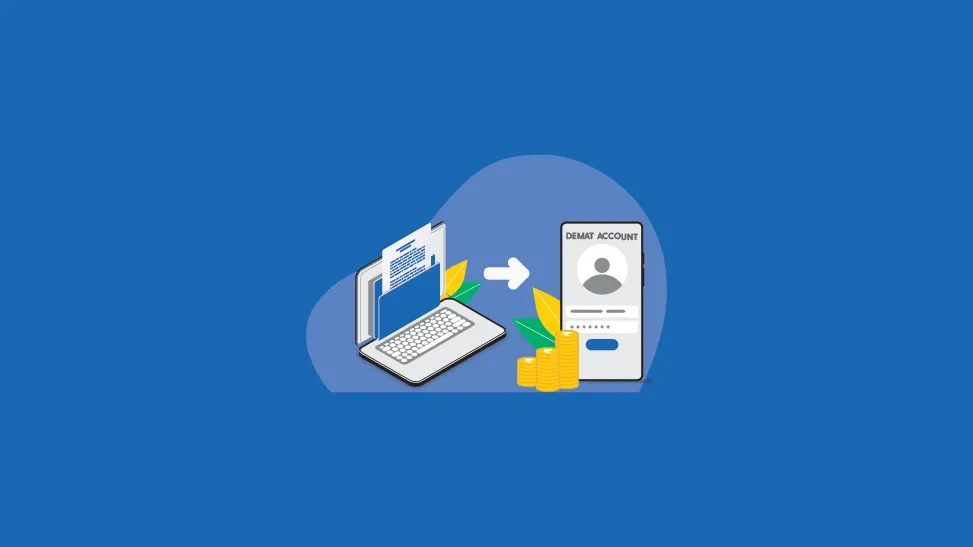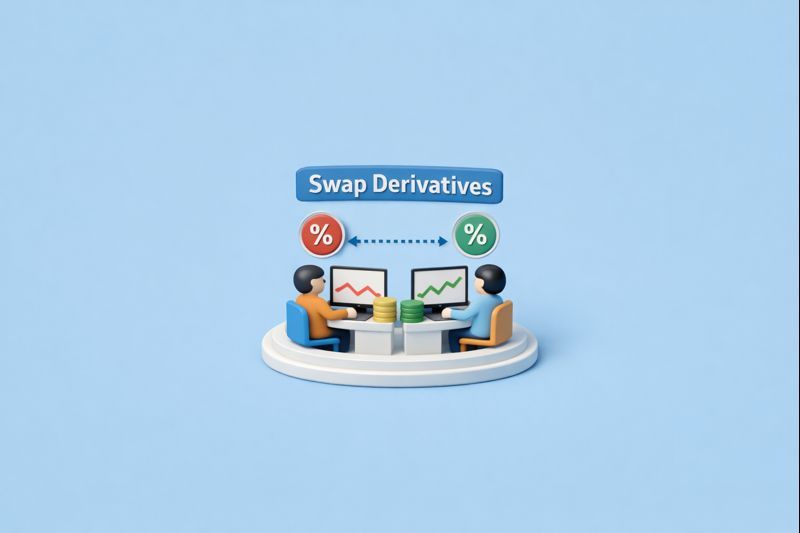- Home
- Blog
- Demat Account
- How To Transfer Shares From One Demat Account To Another - A Step-By-Step Guide
- How To Transfer Shares From One Demat Account To Another - A Step-By-Step Guide
How To Transfer Shares From One Demat Account To Another - A Step-By-Step Guide

- Published Date: December 20, 2024
- Updated Date: August 11, 2025
- By Team Choice
Managing a Demat account efficiently is crucial for trading and investment. Often, investors may need to transfer shares from one Demat account to another, whether for consolidation, tax benefits, or portfolio management. Understanding the process of transferring shares from one Demat account to another can help you navigate the intricacies seamlessly. Managing a Demat account efficiently is crucial for trading and investment. Often, investors may need to transfer shares from one Demat account to another, whether for consolidation, tax benefits, or portfolio management. Understanding the process of transferring shares from one Demat account to another can help you navigate the intricacies seamlessly.
This guide will explore the reasons for transferring shares, the available methods, the participants involved, tax implications, and key considerations to ensure a smooth process.
What is A Demat Account?
A Demat account digitally stores your securities, enabling you to manage them from anywhere. It’s essential for buying, selling, and holding shares. Interestingly, you can have multiple Demat accounts, but ensuring proper management often requires transferring shares between them.
Reasons to Transfer Shares from One Demat Account to Another
Here are the key reasons to transfer shares from one Demat account to another:
- Portfolio Consolidation: To manage all your shares in one account for easier tracking and administration.
- Switching Brokers: Moving shares when changing brokers for better services or lower charges.
- Family Transfers: Gifting shares to family members or transferring ownership for estate planning.
- Tax Optimisation: Transferring shares between accounts for tax benefits or to minimise capital gains taxes.
- Account Management: Moving shares from an old or inactive Demat account to a new, more active one for better management.
These reasons make transferring shares between Demat accounts a useful and flexible tool for investors.
Different Methods to Transfer Shares Between Demat Accounts
Transferring shares from one Demat account to another can be done through two main methods: Manual Transfer and Online Transfer.
Here’s a detailed explanation of each method:
1. Manual Transfer of Shares:
The manual transfer process requires a Delivery Instruction Slip (DIS), which is provided by your current broker. This is a traditional way to transfer shares from one Demat account to another. The steps involved are as follows:
- Obtain the DIS: You need to request a DIS from your current broker. This slip contains important details about the share transfer.
- Fill in the Details: On the DIS, you will need to provide the following information:
- Beneficiary Broker ID: This is a 16-digit unique code for both the current and new broker.
- International Securities Identification Number (ISIN): This number identifies the specific shares you want to transfer.
- Mode of Transfer: If transferring shares between accounts within the same depository (intra-depository), select "off-market". For transfers between different depositories (inter-depository), select "inter-depository".
- Sign the DIS: After completing the details, sign the DIS. Your signature authorises the transfer.
- Submit the Slip: Submit the signed DIS to your current broker to initiate the transfer process. Your broker may charge a fee for the transfer, which could vary depending on the broker’s policies.
While this method is manual, it is effective for transferring shares from one Demat account to another.
2. Online Transfer of Shares:
The online method offers a faster and more convenient way to transfer shares between Demat accounts. Here’s how to do it:
Step 1: Register for Online Facility:
Visit the CDSL or NSDL website and sign up for the ‘Easiest’ or ‘Speed-e’ service.
Step 2: Complete the Application Form:
Fill in the necessary details on the form and submit it.
Step 3: Submit the Form to Your Depository Participant:
Provide a copy of the completed form to your depository participant, who will forward it to the respective depository.
Step 4: Verification and Login Details:
Your information will be verified by the relevant authorities, and you will receive your login credentials within 1 to 2 days.
Step 5: Transfer Shares Online:
Once logged in, you can transfer shares from your demat account whenever you wish.
This method is highly convenient and allows you to manage transfers from the comfort of your home. It eliminates paperwork and speeds up the process.
Who Are the Participants in the Share Transfer Process?
Several entities play a role in transferring shares:
- Investor: The individual initiating the transfer.
- Current Broker: Facilitates the transfer from the existing account.
- New Broker: Receives the transferred shares.
- Depository (NSDL/CDSL): Manages the electronic transfer of securities.
Understanding the roles of these participants ensures a smoother transaction.
Things to Keep in Mind When Transferring Shares Between Demat Accounts
Here are the key things to consider when transferring shares from one Demat account to another:
- Choose a Reliable DP: Select a trustworthy Depository Participant (DP) to ensure smooth processing.
- Verify Details: Double-check the client ID, ISIN, broker ID, and account numbers to avoid errors.
- Monitor Transfer Status: Keep track of the transfer process, especially if using manual or online methods.
- Understand Charges: Be aware of any charges for the transfer of shares by your broker or DP.
- Maintain Records: Keep all documents related to the transfer for future reference.
- Check Tax Implications: Understand potential tax implications like capital gains or gift tax if transferring to others.
- Legal Compliance: Ensure you meet legal requirements, especially for joint accounts or pledge shares.
What Are The Tax Implications of Share Transfers?
Tax liability depends on the nature of the transfer:
1. Transfers to Self-Owned Accounts: No tax liability if shares are transferred between your accounts.
2. Transfers to Others:
- Gifts: Gifts are tax-free under the Income Tax Act 1961, if they don’t exceed the prescribed limit.
- Capital Gains Tax: If the shares were initially acquired via Demat transfer, you may incur capital gains tax when transferring to someone else.
Always document the purpose of the transfer and consult legal or tax advisors for compliance.
Checklist for Transferring Shares Between Demat Accounts
Here's a checklist for transferring shares between Demat accounts to ensure a smooth and hassle-free process:
1. Verify Demat Account Details:
- Confirm the Depository Participant (DP) (e.g., NSDL or CDSL) of both accounts.
- Note down the DP ID and Client ID of both Demat accounts.
- Check if the account types (individual, joint, corporate) of both accounts match.
2. Understand the Type of Transfer:
- Intra-Depository Transfer: When both accounts are within the same depository (NSDL to NSDL or CDSL to CDSL).
- Inter-Depository Transfer: When the accounts belong to different depositories (NSDL to CDSL or vice versa).
3. Obtain the Delivery Instruction Slip (DIS):
- Obtain the DIS book from your current Depository Participant (DP).
- Ensure the DIS form is correctly filled:
- ISIN (International Securities Identification Number) of the shares.
- Quantity of shares to transfer.
- Target DP ID and Client ID.
4. Verify Charges and Fees:
- Confirm transfer charges (if applicable) with your current DP.
- For off-market transfers, ensure you have sufficient funds to cover fees.
5. Check the Transfer Timeline:
- Transfers usually take 1-3 business days for completion.
- For inter-depository transfers, the process might take slightly longer.
Conclusion
Transferring shares from one Demat account to another is a straightforward process if you understand the steps, participants, and implications. Whether consolidating portfolios, changing brokers, or gifting shares, the process can be tailored to your needs. Opt for the manual or online method based on your convenience, and ensure to follow all regulatory guidelines to avoid unnecessary complications.
For seamless investing, open a free Demat account and trading account with a trusted platform like Choice to enjoy smooth share transfer and portfolio management.
FAQs
Can I transfer shares from one Demat account to another online?
Yes, platforms like CDSL EASIEST and NSDL Speed-e enable online share transfers securely.
Are there charges for transferring shares?
Yes, brokers charge transfer fees, which vary based on the DP and transaction type.
Can a Demat account be transferred entirely?
No, Demat accounts cannot be transferred, but you can transfer the securities held in them.
Are there tax implications for share transfers?
Transfers between your own accounts are tax-free. Transfers to others may attract capital gains tax or be considered gifts.
How do I verify a successful transfer?
Monitor your new Demat account to ensure the shares reflect correctly after the transfer.
Related Stories
Who Can Open a Demat Account: Check out this blog to learn who can open a Demat account in India.
Demat Account: Explore this blog to learn about the features and benefits of a demat account.
Recommended for you

Swap Derivatives: Meaning, Types, Benefits And Risks

Currency Derivatives

FII DII Data - Live Data
